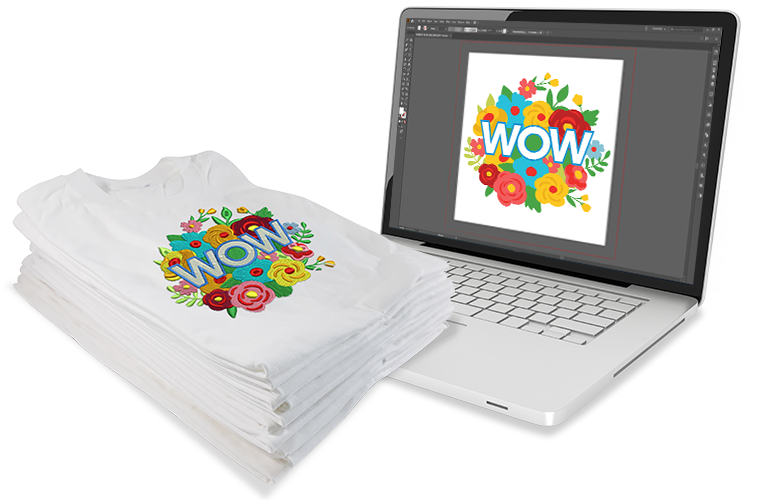Simplifying the Art of Embroidery Digitizing: Step-by-Step Overview
As innovation continues to advancement, the digitization procedure has become a lot more accessible, enabling lovers to bring their complex styles to life with convenience. In this overview, we will certainly unravel the complexities of needlework digitizing, breaking down each action carefully to streamline the procedure and empower both newbies and skilled embroiderers alike.
Recognizing Needlework Digitizing Software Application
Needlework digitizing software program serves as an essential device for changing complex designs right into electronic layouts compatible with needlework machines, promoting precise sewing and customization. This specialized software program enables users to import numerous image documents styles, such as JPG or PNG, and convert them right into needlework machine-readable styles like DST, EXP, or PES - Digitizing for Embroidery. By making use of attributes like stitch editing and enhancing, padding choices, and thread shade choice, digitizing software application allows users to manage every element of the style process
Moreover, progressed needlework digitizing software program provides tools for creating complicated layouts, changing stitch density, and including detailed information. Individuals can also sneak peek the design before stitching it out, ensuring accuracy and lessening errors. Additionally, numerous software application provide automatic features that help streamline the digitizing procedure, conserving effort and time.
Understanding the abilities of needlework digitizing software program is necessary for achieving top quality lead to embroidery projects. By mastering this tool, needlework fanatics and experts can release their creativity and bring detailed layouts to life with precision and effectiveness.

Choosing the Right Style Documents
After familiarizing on your own with the capabilities of needlework digitizing software, the following essential action in the procedure is selecting the best style data for your project. Digitizing for Embroidery. When selecting a style declare embroidery digitizing, it's vital to consider the intricacy of the layout, the size of the end product, and the sort of fabric you will be working with
For complex styles with fine information, a high-resolution photo or vector file is advised to ensure that the embroidery maker can accurately reproduce the layout. Furthermore, the dimension of the final item plays a considerable duty in selecting the best style documents. Larger designs may call for higher resolution data to keep clearness and intensity.
Moreover, the kind of material you will certainly be embroidering on influences the option of style data. Different fabrics may require adjustments in the layout file to make certain that the stitches are appropriately aligned and the design shows up as intended. By very carefully choosing the ideal layout documents based on these elements, you can set on your own up for a successful needlework digitizing procedure.
Digitizing Devices and Methods
Making use of specialized software application and accuracy techniques, digitizing tools are necessary in changing detailed layouts into embroidery-ready data. Needlework digitizing software program, such as Wilcom, Hatch, or Embrilliance, offers the required system to convert artwork into stitch data. These programs provide features like stitch modifying, rug options, and lettering tools to guarantee the design equates flawlessly onto fabric.
Among the vital methods in digitizing is creating a clear path for the needlework equipment to comply with. This includes digitizing each component of the layout with accuracy, figuring out stitch types, densities, and instructions. By using devices like digitizing tablets or software-specific plugins, embroiderers can attain a high level of precision in their digitized designs.
Additionally, understanding the art of padding sewing is critical for generating top quality needlework. Underlay sewing supports the material and creates a structure for the style, ensuring that the last item is both visually attractive and durable. By comprehending these digitizing devices and methods, embroiderers can boost their craft and bring elaborate styles to life with precision and performance.
Tailoring Stitch Types and Instructions
The choice of stitch kinds can significantly impact the total appearance and structure have a peek here of the stitched style. By tactically integrating these stitch kinds, embroiderers can accomplish check out this site deepness and dimension in their layouts.
Additionally, the direction of stitches plays a crucial role in boosting the aesthetic appeal of the last needlework. By experimenting with various stitch angles and patterns, embroiderers can bring their layouts to life with impressive detail and intricacy.
Screening and Refining Your Digitized Style
To make certain the accuracy and top quality of your digitized design, thorough testing and improvement are necessary steps in the needlework digitizing process. As soon as you have actually finished the digitization of your layout, it is essential to examine it before waging the actual embroidery. Examining allows you to identify any kind of potential issues such as thread breaks, stitch density troubles, or layout distortions that might impact the last result.

After testing, it is vital to fine-tune your digitized design based on the responses from the test sew-out. This might entail tweaking sew settings, adjusting thickness, or making changes to the general design to attain the preferred outcome. By repeating through screening and improvement, you can fine-tune your digitized design to perfection before moving on with the actual embroidery process.
Final Thought
In verdict, understanding the art of embroidery digitizing needs a detailed understanding of the software program, picking the best design file, using digitizing devices and strategies, site customizing stitch types and instructions, and testing and refining the digitized layout. By adhering to these actions, embroiderers can simplify the digitizing procedure and produce high-grade stitched designs with accuracy and performance.
Comments on “Best Digitizing for Embroidery: Improve Your Tasks”